#Thomas Rackow
Text
Google fired the 28 employees who protested against the Alphabet division’s $1.2 billion cloud-computing contract with the Israeli government, just days after they staged sit-ins at offices around the nation.
The protests took place Tuesday at offices in New York City, Sunnyvale, California, Seattle and elsewhere. The group in Sunnyvale occupied the office of Google Cloud CEO Thomas Kurian and livestreamed the sit-in on a Twitch channel called “notech4apartheid.”
On the stream, they said New York staffers had been arrested after they sat down in a common space in the office and opened up a banner reading, “No Tech for Genocide.” They were released several hours later.
The protest focused on Project Nimbus, the cloud computing service Google provides Israeli government agencies in partnership with Amazon as part of a contract worth $1.2 billion.
The group also has a website, NoTechForAparteid.com, which encourages visitors to petition both Google and Amazon to stop doing business with Israel.
While the contract has long been an issue for some of Google’s staffers, the tensions surrounding it have escalated since the start of Israel-Gaza war in October, The New York Times reported.
Google Vice President for Global Security Chris Rackow said in a company-wide email that the staffers were let go after “they took over our office spaces, defaced our property and physically impeded the work of other Googlers..”
“Their behavior was unacceptable, extremely disruptive, and made co-workers feel threatened,” said the memo, which CNBC posted.
Rackow said the 28 were fired after an investigation. “We will continue to investigate and take action as needed,” he wrote. “Behavior like this has no place in our workplace and we will not tolerate it.”
“The overwhelming majority of our employees do the right thing,” Rackow continued. “If you’re one of the few who are tempted to think we’re going to overlook conduct that violates our policies, think again.”
No Tech for Apartheid said in a statement that the comapny “indiscriminately” engaged in “wholesale firings,” including of some workers who did not take part in the protests “through a dragnet of in-office surveillance” and denied damaging property or threatening colleagues.
“This flagrant act of retaliation is a clear indication that Google values its $1.2 billion contract with the genocidal Israeli government and military more than its own workers,” the statement said. “In the three years that we have been organizing against Project Nimbus, we have yet to hear from a single executive about our concerns. Google workers have the right to peacefully protest about terms and conditions of our labor. These firings were clearly retaliatory.”
“These mass, illegal firings will not stop us,” the statement continued. “On the contrary, they only serve as further fuel for the growth of this movement. Make no mistake, we will continue organizing until the company drops Project Nimbus and stops powering this genocide.”
5 notes
·
View notes
Photo



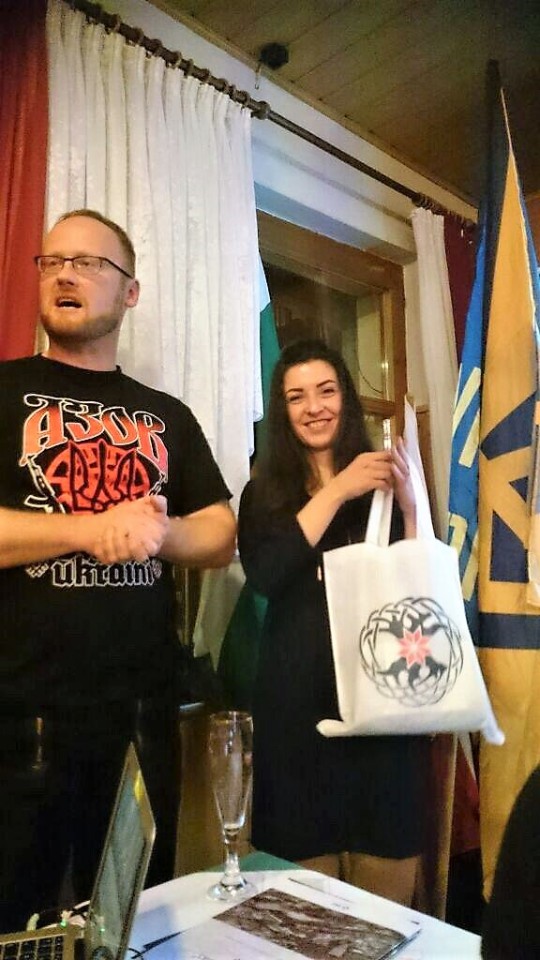
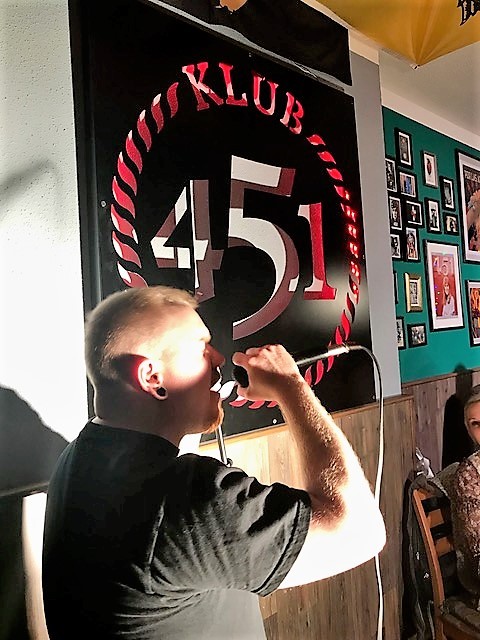
"The Evolution of the Azov Movement" at the event of NPD in Saxon Switzerland
Feb. 16, the activists of the Kraftquell project and the department of NPD in Saxon Switzerland hosted a unique event in this beautiful German land dedicated to the evolution of the rapidly growing Ukrainian Azov Movement.
The lecturer was Olena Semenyaka, International Secretary of National Corps, the parliamentary wing of the Azov Movement. Her speech was supported by video presentations and translated to German with a detailed background information for the local audience. The vivid interest of the listeners was manifested during the questions part of the event. What is remarkable, not only youth was present at the meeting, and the older German generation showed a rare knowledge of the Ukrainian history and state building.
Olena Semenyaka highlighted the origins of the Azov Movement as the Ukrainian nationalist organization of the new generation named The Patriot of Ukraine, which emerged in the Eastern Ukrainian city of Kharkiv and, since its very inception, had a mature paneuropean thinking, as well as regularly conducted paramilitary training. When the Maidan Revolution broke out, members of The Patriot of Ukraine were well-prepared to fight the police, first within the broad national-revoutionary movement of Right Sector, then, after their unalterable leader Andriy Biletsky was released from prison, as the newborn Azov Movement.
Following the path from the war to politics, they formed the Black Corps comprised of the "little black men" as a response to anonymous Russian "little green men" without insignia who annexed Crimea during the so-called democratic referendum on its future fate. The Black Corps operated in Eastern Ukraine, and its first most successful operation was the liberation of half a million city of Mariupol, the second biggest city in the region after Donetsk.
At that time, it has already been the Azov Battalion, the only Ukrainian volunteer battalion which has been converted shortly afterwards into the regiment of the National Guard of Ukraine. If the authorities had provided minimal support for the unit, it would have entered Donetsk, and the only successful counter-offensive operation throughout the entire course of the conflict under conditions of Minsk peace agreements was conducted precisely by the Azov Regiment, namely the release of Shyrokyne.
The logic of the Azov Movement's unfolding was as follows: the Azov Civil Corps, the National Corps party, the paramilitary structure of National Militia, and over 30 projects functioning as independent NGOs, from the education and metapolitics to sport and youth camps.
But the most challenging projects of the Azov Movement, which is well-prepared for the hybrid scenario both at war and in politics, are the geopolitical ones. Olena Semenyaka emphasized that the Intermarium (Adriatic-Baltic-Black Sea) defense union as a platform for the alternative to the EU sovereign Paneuropean union is the main geopolitical program of National Corps. In this context, she referred to the German doctrines of Mitteleuropa, as well as made it clear that National Corps considers Ukraine an heir of the continental mission of "the heart of Europe," Germany, in times of the "iron chancellor" Otto von Bismarck. In turn, the Azov Movement, in her opinion, heavily reminds of the German Freikorps caught between two fires: on the one hand, the Bolshevik invasion in Germany and Baltics, on the other hand, the treacherous Weimar government.
However, Olena Semenyaka concluded to say, precisely the false rivalry of the West and the Russian Federation creates the unique chance for the intended "buffer zone," Eastern Europe, to become the center of the restoration of the all-European geopolitical subjectivity and superpower. After the majority of Russian nationalists fled to Ukraine due to severe "anti-extremist legislation," multicultural agenda and "Nazi" witch hunt in Putin's Russia, it has become obvious that only Eastern and Central Europe, especially Ukraine, remains the space of political freedom and the springboard for ambitious geopolitical projects.
The host of the event was the initiator of the Kraftquell project Thomas Rackow who seized the opportunity to announce the opening of this German-Ukrainian-Norwegian project in Germany. The goal of this, in fact, charity project is to organize a vacation in Germany and Norway for some Ukrainian veteran families and thus to show the European family of peoples in action. In the end of the lecture, Olena Semenyaka received a package of production promoting the Kraftquell project which was made with the support of the excellent metapolitical center in Pirna, Haus Montag, which is coordinated by Thomas Sattelberg.
The event was closed with a fantastic live performance by Phil of FLAK, a famous German RAC band, which, according to the fair observation of the frontman, has long transcended the genre in terms of the scope of the ideological response and the suggested positive alternative. Apart from the classic FLAK in German, he performed the composition in English which was dedicated to the paneuropean solidarity of European nations.
The participants of the meeting eagerly made further cooperation plans for the observable future, which, apart from the Kraftquell project, includes the publishing initiatives and joint international events.
#Pirna#NPD#Haus Montag#Thomas Rackow#Kraftquell#Thomas Sattelberg#NPD Sachsen#Olena Semenyaka#Azov Movement#National Corps#Andriy Biletsky#Intermarium#Mitteleuropa#Paneuropa#FLAK
0 notes
Text
Revelan una posible ruta del iceberg gigante que 'partió' la Antártida
Nuevo artículo publicado en http://www.prozesa.com/2017/07/19/revelan-una-posible-ruta-del-iceberg-gigante-que-partio-la-antartida/
Revelan una posible ruta del iceberg gigante que 'partió' la Antártida
El enorme iceberg A-68 desprendido de la Antártida pesa un billón de toneladas y tiene una superficie de 5.800 kilómetros cuadrados, más del doble que Luxemburgo.
Los investigadores del Centro Helmholtz de Investigación Polar y Marina del Instituto Alfred Wegener (AWI) de Alemania siguen con gran interés el movimiento del enorme iceberg A-68 que se desprendió del témpano de hielo Larsen C en la Antártida y han pronosticado su posible ruta. Estos científicos han modelado la deriva de icebergs a través de las aguas antárticas según su punto de origen y sus posibles influencias y han destacado cuatro trayectorias por las que pueden viajar. Según su teoría, el A-68 se desplazará por la costa oriental de la península Antártica, y se alejará del mar de Weddell hacia el océano Atlántico hacia el nordeste, "más o menos hacia las islas Georgias y Sándwich del Sur", detalla Thomas Rackow, uno de los autores de la investigación. Para este especialista "será muy interesante" averiguar si esa masa "se moverá como esperamos", ya que será una prueba real para comprobar a veracidad de los modelos existentes y nuestra comprensión de esos fenómenos.
El iceberg continúa su movimiento
De momento, el gigantesco trozo de hielo se comporta según lo previsto y continúa a la deriva en el mar de Weddell. Las últimas imágenes de satélite Deimos-1 muestran que está rodeado de agua clara, lo que indica que la brecha entre el iceberg y el témpano de hielo del que proviene se está ampliando. Asimismo, una nueva gran grieta indica que el extremo noreste del iceberg se está rompiendo. https://twitter.com/deimosimaging/status/886898567851503617
¿Catástrofe planetaria?
La Agencia Espacial Europea (ESA, por sus siglas en inglés) estima que el desprendimiento del A-68 resulta particularmente importante ya que, por sus dimensiones, podría "plantear una amenaza al transporte marítimo". Además, el desmoronamiento del Larsen C forma parte de una tendencia más amplia de reducción de los estantes de hielo en la región antártica que los científicos vinculan con los efectos del calentamiento global. Sin embargo, este incidente no elevará los niveles del mar de manera considerable. Tras el desgajamiento de este iceberg, algunos científicos también tratan de predecir qué sucederá si las masas de hielo en los polos se derriten. Vestifinance sospecha que podría suponer "una catástrofe planetaria" que provocaría un aumento del nivel del mar que rondaría los 66 metros. El portal vaticina que ese desastre natural inundaría ciudades como Miami (Florida, Estados Unidos), Buenos Aires (Argentina) y El Cairo (Egipto) y recuerda que el cambio climático puede provocar hambrunas, inundaciones y la propagación de enfermedades, además de enormes daños económicos.
El iceberg A-68 pesa un billón de toneladas y tiene una superficie de 5.800 kilómetros cuadrados, más del doble que Luxemburgo.
Se trata de una de las mayores piezas que se han desprendido de la masa de hielo antártica desde que comenzó la supervisión vía satélite, a comienzos de los años 90.
Esa separación cambiará por completo el paisaje de la zona y algunas estimaciones indican que supone "un evento de escala planetaria".
0 notes
Photo

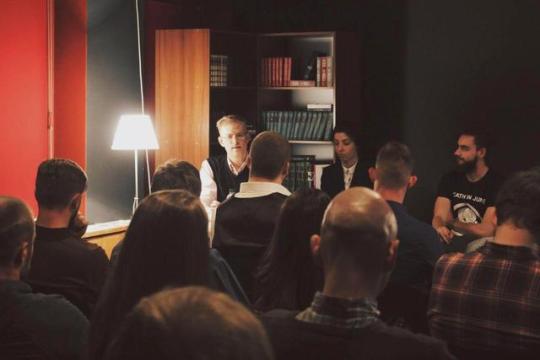

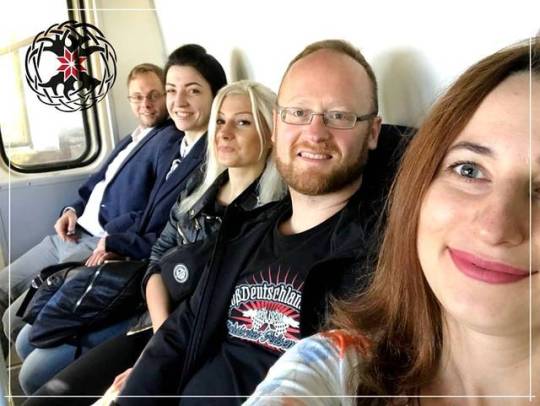
The Azov Movement in the West: achievements in 2019
Despite the fact that the official agenda of National Corps is a course towards Intermarium (Adriatic-Baltic-Black Sea Union), the years 2018 and 2019 were marked not only by regional events of the Intermarium Support Group, founded by Andriy Biletsky, Leader of National Corps, but also by popularization of our project in Western Europe and establishing of cooperation with both friendly Western European parties and those influenced by pro-Russian lobbyists. Along with it, we find sympathizers of Central and Eastern European Union among political forces and media platforms of the United States.
Having engaged in our activities, we adhere not only to the principle of paneuropeanism and alternative universalism, which shall prevent us from regional isolationism in the 21st century. Nor solely to the possibility (yet remote possibility) of the alternative of the EU all-European integration based on Central and Eastern Europe in case of growing animosity and decentralization of Europe.
It is a high time to admit that pro-Russian threat in Europe is tied not only with right-wing populists and “radicals”. After all, such influential right-populist parties like Polish PiS (Law and Justice) and Estonian EKRE (Estonian Conservative People’s Party), which lined up a fifth of seats on parliamentary elections, assume anti-Kremlin geopolitical attitude. Furthermore, namely these parties: both EKRE or Latvian coalition party “National Alliance” – are actual and potential Intermarium Support Group partners.
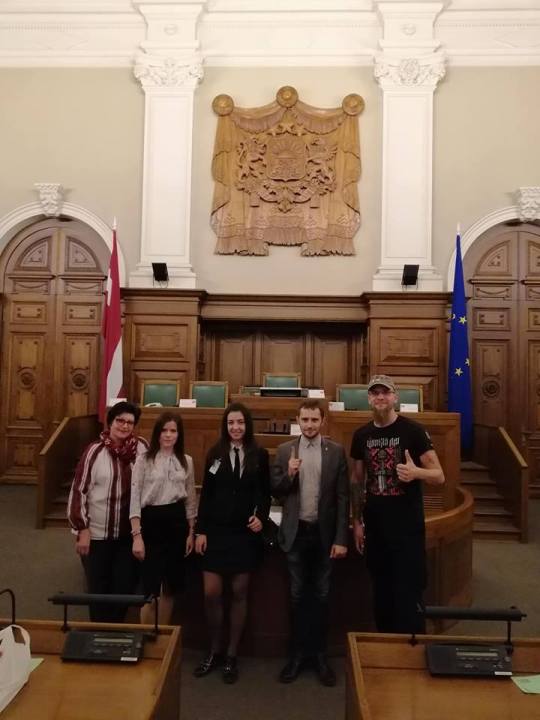
The problem is of another kind: not only a potentially pro-Russian coalition gathers in the European Parliament around the Italian Lega and German AfD – official Berlin, an economic leader of the EU, gradually weakens its resistance against Nord Stream 2, the pipeline which shall be built in circumvention of Ukrainian territory and rests on not only Russian and German but also Austrian, Danish and French funds. Following its own interests, neoliberal European Union persuades Ukraine to “conciliate” with the Russian Federation, which, in its turn, contradicts the interests of the US and some Central and Eastern European Countries only – again, “right-populist”.
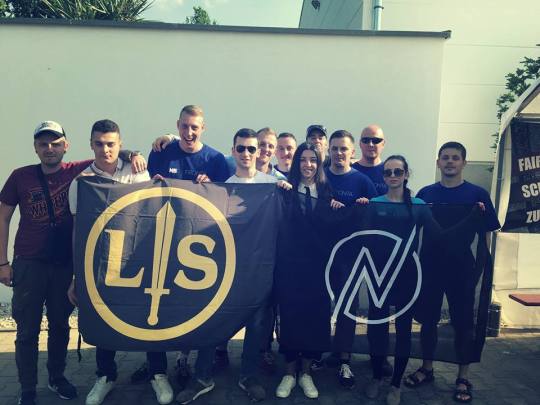
Under such conditions, it is important to prevent the Intermarium Support Group’s activites from deceleration, especially in the light of electoral success of the Finns Party, The Swedish Democrats, Danish People’s Party and other parliamentary forces of the region, which are currently either in the danger zone, or already cooperating with pro-Russian anti-immigration colleagues from Western Europe. Furthermore, given the lack of political unity among such parties, it is worth to give a due time alternative for those willing to think strategically and to avoid the fate of Putin’s fan club.
However, it is no less important to multiply our informational presence in Western European and American informational field via cooperation with “pro-Ukrainian” organizations and even their separate structures.
The starting point of informational expansion of the Azov Movement in the Western European field shall be considered to the Paneuropa Conference, which took place 28 April 2017 in Kyiv under the auspices of all-European Reconquista movement founded in 2015 on the back of mass foreign volunteer support in the National Liberation War in the East of Ukraine. This conference, dedicated to the idea of the alternative to European integration and geopolitical cooperation, gathered representatives of French, Italian, German, Swedish, Croatian, Polish, Lithuanian, Latvian and Russian emigrational political forces supporting a persistent course towards the creation of a sovereign Paneuropean confederation.

On October 15, 2018, the second Paneuropean conference was held in Kyiv, which was visited by local political forces, but also by speakers from Italy, Germany, Norway, Sweden, and the US. Similarly to the constituent conference, it included both the political, party element and the metapolitical component represented by Western intellectuals and bloggers associated with the Third Way, identitarian movement, French New Right (Nouvelle Droite) and American Alt-Right. Both conferences have gathered such prominent Western pro-Intermarium metapolitical thinkers like Gabriele Adinolfi, Pascal Lassalle, Marcus Follin (The Golden One), and Greg Johnson.

Active expansion of the Azov Movement into Western geopolitical and metapolitical sphere has begun with the participation of its representatives Victoria Polunina and Olena Semenyaka in the paneuropean congress named REGeneration Europa, which was organized on May 11-12, 2018, in the German town of Riesa by a youth branch of NPD, Junge Nationalisten. Though a marginal pro-LDNR Russian group was also represented at the conference, which provoked the pro-Ukrainian wing, it was the first mass Western European event marking the start of the further Azov “tour” across Western Europe on the invitations from the interested in the prospects of our cooperation.

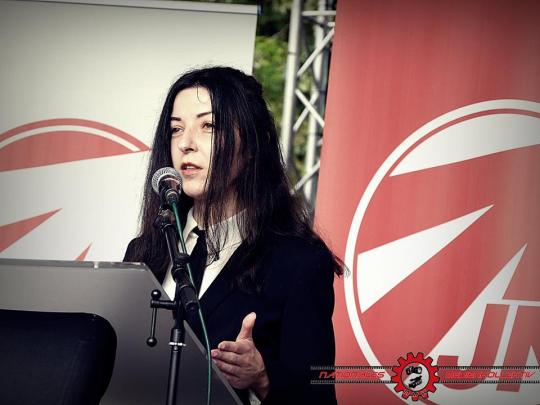
Next year, in spite of a fact that the NPD party has a split on the question of a military and geopolitical conflict between Ukraine and Russia, its youth branch took part in the second Paneuropa Conference in Kyiv and already on February 15-16, 2019 international secretary of National Corps Olena Semenyaka accepted the invitation of the NPD in Saxon Switzerland and the metapolitical center Haus Montag to speak at the event in Pirna in the course of which she described the history of the Azov Movement, the next day after the march in memory of victims of Dresden bombardment.
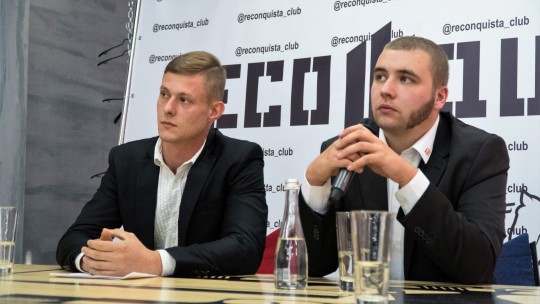
Among all described projects of the Azov Movement, the most challenging, but promising one is the geopolitical program of National Corps: Intermarium defense union as a platform for the alternative to the EU sovereign Paneuropean union. The false rivalry of the West and the Russian Federation creates the unique chance for the intended “buffer zone,” Eastern Europe, to become the center of the restoration of the all-European geopolitical subjectivity.
Moreover, this event was the first in the cycle of events within the framework of the «Ukrainian Year» in Germany, on the initiative of Thomas Rackow, the author of the charity German-Ukrainian-Norwegian Kraftquell (Source of Power) project aimed at organizing the vacation for veteran Ukrainian families in Germany and Norway as a sign of the solidarity of the European family with the belligerent Ukraine. He announced this project during the Paneuropa Conference II in Kyiv and on completion of the speech by Olena Semenyaka in Pirna.

In addition, namely on his initiative, Olena visited the annual convention of autonomous Norwegian nationalists in Eastern Norway who were interested in the geopolitical program of National Corps and supported the Kraftquell project.

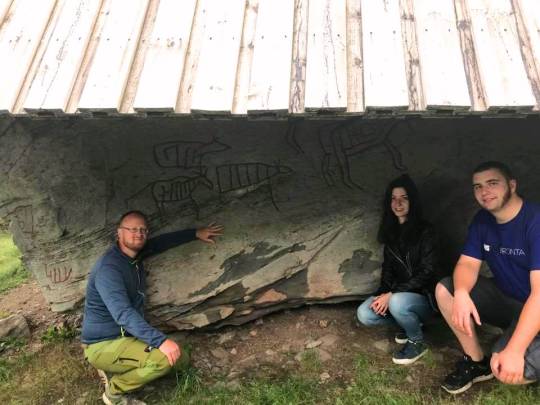
In June 2018, Olena Semenyaka also delivered a speech to the audience of Flamberg Club, the identitarian metapolitical center in Halle, within the framework of an event entitled “Ukrainian Evening: geopolitics, ideas, prospects”. She revealed the basis of Ukrainian state building, identity, the conflict with Russia, history and structure of the Azov Movement and the geopolitical project of Intermarium.
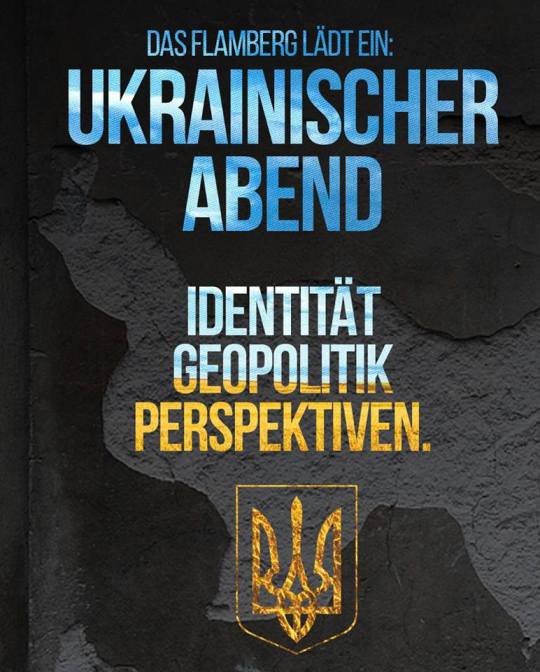
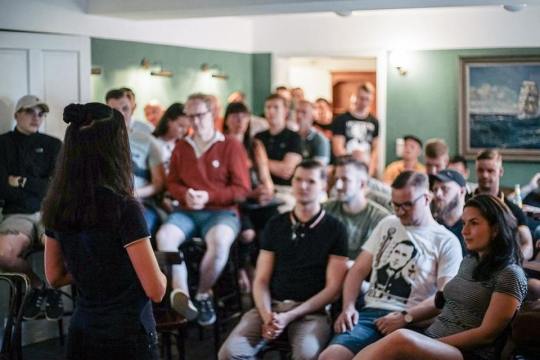
As soon as 3-5 of August 2018, Olena Semenyaka also delivered a lecture at the first Jungeuropa Forum organized in Dresden by Jungeuropa Verlag, the friendly publishing house of identitarian Third Way literature. Olena described to German and Austrian identitarians the geopolitical, cultural and philosophical foundations of Intermarium.
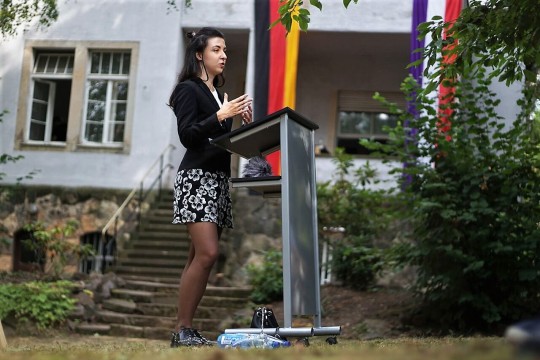
June 7, 2018, Olena Semenyaka revealed the metapolitical strategies of the Azov Movement at the cultural and political event entitled “The Youth Storms” in Kirchheim, Thuringia on the invitation of the German party Der III. Weg (Third Way), a long-time ally of the Azov Movement, the first ones who united with the German branch of the Reconquista Movement in their efforts to destroy the information blockade around the fight of Ukrainian patriots.
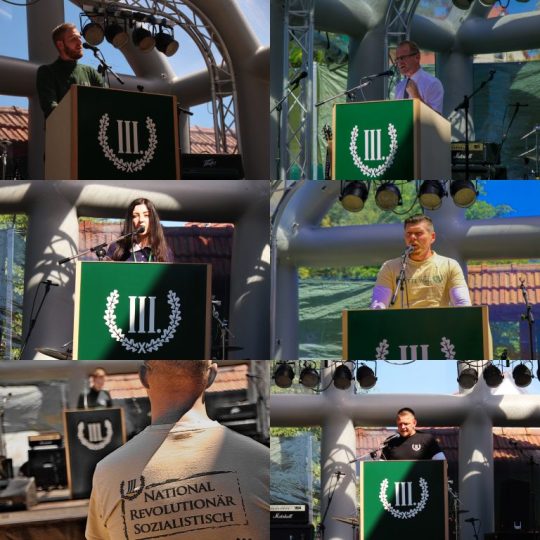
In the wake of the Third Conference of the Intermarium Support Group in October 13, 2018, which, among others, was attended by the representative of the Academic Legion Project of the Ministry of National Defense of Poland Damian Duda and Croatian Armed Force General Brigadier Bruno Zorica, right on February 15-16, 2019, Eugene Vriadnyk, combat veteran of the Azov Regiment, founder of Plomin publishing house, delivered a speech on his vision of archeofuturistic future of Central and Eastern Europe at the Prabudimas Conference in Vilnius, as well as took part in a torchlight procession in honor of the anniversary of Lithuania’s independence, which were organized by the Kryptis ethnofuturist association.

January 7, 2019, Olena Semenyaka participated in the commemoration of three young Italian patriots killed by communists in Acca Larentia massacre. The march, dedicated to the bloody event of the Lead 70-s, has become an all-Italian sacral rite precisely thanks to the activity of Casa Pound Italia. This organization has also brought this event even to the all-European and transcontinental level, gathering participants as far as from Quebec. This visit has strengthened the partnership with CasaPound Italia represented by their international correspondent Alberto Palladino at the Second Paneuropa Conference in Kyiv.
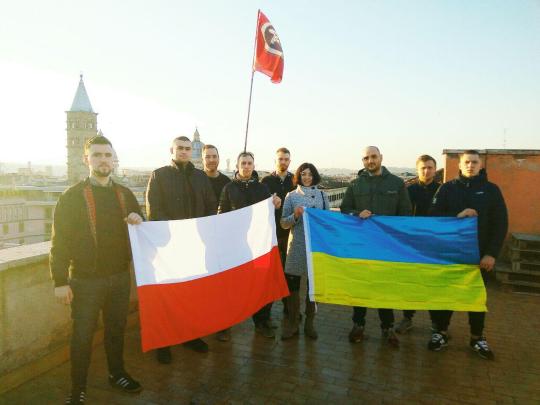

Besides, National Corps has been a participant of the Third Etnofutur Conference, which took place on the 23rd of February in Tallinn. This event is held annually by the youth organization of Estonian People’s Conservative Party (EKRE), Blue Awakening (Sinine Äratus). Traditionally, the strong emphasis has been laid on the conceptual synergy of the nationalist speakers of the Intermarium region. Olena Semenyaka has delivered a speech entitled “Middle Europe in the Age of Caesarism and the Purpose of Ethnofuturism”. In her speech, she mentioned that namely the Azov Movement is the brightest example of Ethnofuturism as a combination of innovative technologies with the policy of protecting ethnocultural identities.

Having referred to Oswald Spengler’s concept of Caesarism as the final period of the historic cycle of the West which began with the first world war, Olena presented Intermarium as space where Old Europe can return to life again entering a new cultural and civilizational turn.
In addition, National Corps sent his representative to support EKRE ahead of parliamentary elections. Fortunately, the allied party showed an exceptionally high result. On February 24, Olena, also traditionally, participated the celebration of the independence of Estonia and anniversary torchlight parade.

On March 30, 2019, Olena Semenyaka spoke at the Pan-Scandinavian Scandza Forum founded by Fróði Midjord. The forum addressed the problems of the lacking freedom and imported chaos in modern Western societies (”Anarcho-Tyranny”). Having investigated the issue in the context of Ernst Jünger’s criticism of neo-totalitarian police state, as well as the need to put modern audiovisual technologies into service of our own historical visions, she called the region of Central and Eastern Europe the space of political freedom where it would be possible to develop the paneuropean infrastructure for such purposes. The event was also attended by members of Swedish Democrats and Alternative for Sweden.
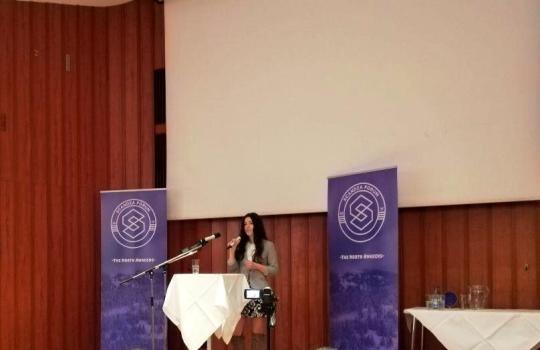
After the Scandza Forum, Olena Semenyaka became the guest of the “Anton och Jonas” video program during which she discussed the course of the Maidan Revolution, the reasons for the geopolitical confrontation with Russia, the milestones of the formation of the Azov Movement and the Intermarium project. Her interlocutors were Anton Stigermark, the representative of the Alternative for Sweden party, the author of the “Memetic Warfare”, who also participated in the MMA tournament at the Kyiv Reconquista Club, and Jonas Nilsson, coordinator of the Boer Project, also the MMA enthusiast and a former instructor of the Azov regiment, which hosted a lot of Swedish military volunteers.
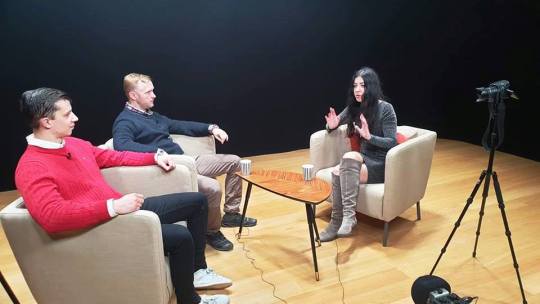
Finally, on April 6, 2019, the National Corps, represented by the international secretary and coordinator of the Intermarium project Olena Semenyaka, took part in the Awakening II Сonference in the Finnish city of Turku. At this conference, Olena made a presentation "Finnish-Ukrainian Cooperation Then and Now As Seen by National Corps” during which she discussed the diplomatic cooperation of Finland with the Hetmanate and the UPR in the previous century, in particular, thanks to the ardent Finnish advocate of the Ukrainian national liberation movement Hermann Gummerus, as well today’s step-by-step integration program of the Intermarium Support Group.
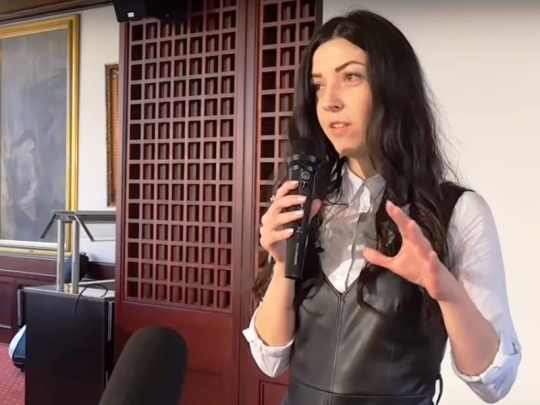
In addition to foreign speakers and guests, the event was visited by members of the Finnish identitarian organization Suomen Sisu and the youth branch of the Finns Party. Finnish audience, which had its own experience of Russian-Finnish wars, was fascinated by the natural geopolitical vector towards Intermarium. It is worth to mention that the Finns Party has lined up 39 parliamentary seats out of 200 during the recent election.
It is planned that Olena Semenyaka will take part in Forum Prisma Actual on May 4, 2019, in Lisbon, on the invitation of Escudo Idetitario, Portuguese identitarian organization. Along with developed Spanish branch of the paneuropean Reconquista movement, Portuguese patriots couldn`t help resonating with the cause of the novel Ukrainian “conquistadors.”

Among the Southern European countries, the great interest in Azov’s activity is shared by Greece whose patriotic audience also feels the cultural and geoeconomic affinity towards the project of Intermarium and invite National Corps to their land.
However, the priority of the Intermarium Support Group for the second half of 2019, of course, is holding the Fourth International Conference bringing the regional European integration to the new level. According to preliminary plans, the conference will be held in Zagreb, a center of the Adriatic angle of Intermarium.
#National Corps#AZOV movement#Andriy Biletsky#Intermarium Support Group#Olena Semenyaka#eugene vriadnyk#Paneuropa#reconquista movement
4 notes
·
View notes